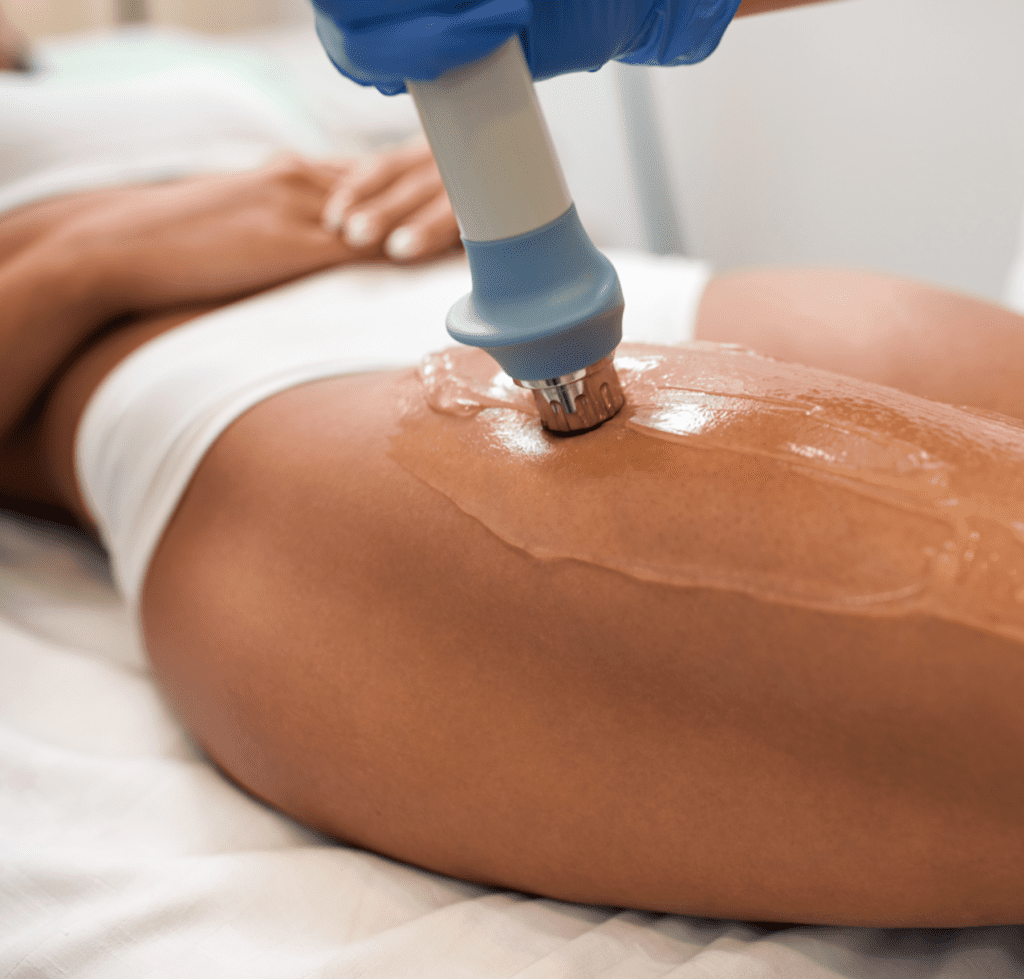Common Hip Issue: Trochanteric Pain
Greater Trochanteric Pain Syndrome (GTPS) is a common condition that affects the lateral aspect of the hip. It is characterized by pain in the region of the greater trochanter, the bony prominence on the upper part of the femur. The condition is often caused by overuse or trauma and can be debilitating for many patients. While traditional treatment options such as physical therapy, anti-inflammatory medication, and corticosteroid injections can provide temporary relief, Extracorporeal Shockwave Therapy (ESWT) has emerged as an effective and long-lasting treatment option for GTPS.
What is Extracorporeal Shockwave Therapy?
ESWT is a non-invasive treatment that uses high-intensity sound waves to stimulate healing in the affected area. The treatment is performed using a handheld device that delivers shock waves to the affected area. These shock waves penetrate the skin and stimulate the healing process by increasing blood flow and reducing inflammation. ESWT has also been used for the treatment of a variety of other musculoskeletal conditions, including plantar fasciitis, tendinopathies, and calcific tendinitis.
Recent studies have shown that ESWT can be an effective treatment option for patients with GTPS. A study published in the Journal of Orthopaedic Surgery and Research in 2020 found that patients who underwent ESWT experienced a significant reduction in pain and improved function compared to those who received corticosteroid injections. Another study published in the Journal of Ultrasound in Medicine in 2019 found that ESWT was effective in reducing pain and improving function in patients with chronic GTPS.
One of the advantages of ESWT is that it is a non-invasive treatment option. This means that patients can avoid the risks and complications associated with surgery. ESWT is a quick and relatively painless procedure that can be performed in an outpatient setting. Patients typically experience some mild discomfort during the procedure, but have no downtime afterwards.
ESWT can also be performed in combination with other treatments like Platelet Rich Plasma depending on the severity of the condition. Patients who undergo ESWT typically experience long-lasting pain relief, which can reduce the need for repeated treatments and medications.
The Takeaway?
Extracorporeal Shockwave Therapy is a safe and effective treatment option for patients with Greater Trochanteric Pain Syndrome. The non-invasive nature of the treatment, along with the potential for long-lasting pain relief and improved function, make it an attractive option for patients who have not responded to other treatments. Patients who are interested in ESWT should discuss the treatment with their physician.
References
Furia, J. P., Rompe, J. D., & Maffulli, N. (2009). Low-energy extracorporeal shock wave therapy as a treatment for greater trochanteric pain syndrome. The American Journal of Sports Medicine, 37(9), 1806–1813. https://doi.org/10.1177/0363546509333014










